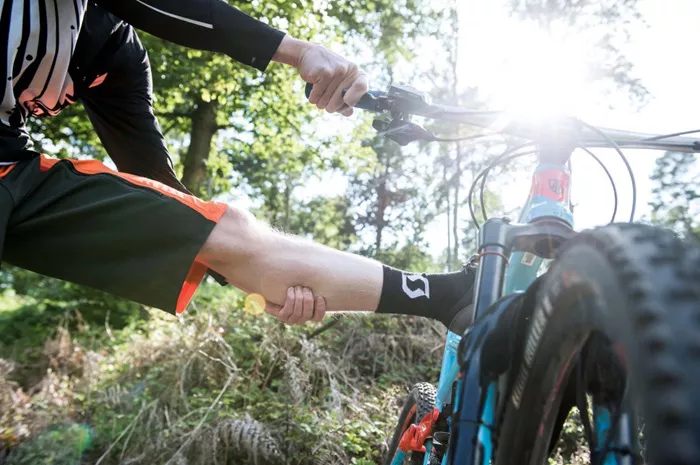Mountain biking is an exhilarating activity that challenges both the mind and body. However, leg cramps can put a damper on this otherwise thrilling experience. Preventing these cramps involves a combination of proper preparation, adequate hydration, appropriate nutrition, and understanding how to respond if they occur. This article provides comprehensive strategies to help you enjoy your mountain biking adventures without the interruption of painful leg cramps.
Understanding Leg Cramps
What Are Leg Cramps?
Leg cramps are involuntary contractions of one or more muscles, typically occurring in the calf, thigh, or foot. These sudden, sharp pains can last anywhere from a few seconds to several minutes and can severely hinder your ability to continue biking.
Common Causes of Leg Cramps in Mountain Biking
Understanding the common causes of leg cramps can help in preventing them. Factors include:
Dehydration: Loss of fluids and electrolytes can lead to muscle cramps.
Electrolyte Imbalance: Sodium, potassium, and magnesium are crucial for muscle function.
Muscle Fatigue: Overworking muscles without adequate rest can trigger cramps.
Poor Circulation: Insufficient blood flow to the muscles can cause cramping.
Improper Bike Fit: An incorrectly fitted bike can strain muscles, leading to cramps.
Preparation Before Mountain Biking
Proper Hydration
Staying hydrated is crucial for preventing leg cramps. Drink plenty of water throughout the day before your ride. On the day of your ride:
Pre-Hydrate: Drink at least 16-20 ounces of water or an electrolyte drink two hours before your ride.
During the Ride: Consume about 8 ounces of water every 20 minutes. If the weather is hot or you’re sweating heavily, increase this amount.
Electrolyte Balance
Maintaining electrolyte balance is vital for muscle function. Include electrolyte-rich foods and drinks in your diet:
Potassium: Bananas, oranges, and potatoes.
Magnesium: Nuts, seeds, and leafy greens.
Sodium: Salty snacks like pretzels or sports drinks with sodium.
Nutrition
A balanced diet supports muscle function and endurance. Focus on:
Carbohydrates: Provide energy for your ride. Include whole grains, fruits, and vegetables.
Protein: Supports muscle repair and recovery. Include lean meats, beans, and dairy.
Healthy Fats: Nuts, seeds, avocados, and fish provide sustained energy.
Stretching and Warm-Up
Warming up your muscles before riding can prevent cramps. Include dynamic stretches to get your blood flowing:
Leg Swings: Forward and sideways.
Lunges: Walking lunges to activate leg muscles.
Calf Raises: Strengthen and stretch calf muscles.
During the Ride
Hydration Strategy
Maintain a steady intake of fluids and electrolytes:
Water: Sip regularly rather than drinking large amounts at once.
Electrolyte Drinks: Use drinks that replenish lost electrolytes during intense rides.
Pacing and Rest
Avoid overexertion by pacing yourself:
Steady Pace: Maintain a consistent pace rather than pushing too hard early on.
Rest Breaks: Take short breaks to rest and hydrate, especially on longer rides.
Bike Fit and Posture
Ensure your bike is properly fitted to prevent strain:
Seat Height: Adjust so there’s a slight bend in your knee at the bottom of the pedal stroke.
Handlebar Position: Ensure a comfortable reach to avoid overextending muscles.
Pedaling Technique: Use smooth, circular motions rather than pushing down hard on the pedals.
After the Ride
Post-Ride Stretching
Stretching after your ride can prevent cramps and aid recovery:
Calf Stretch: Stand with one foot forward and one back, and lean into the stretch.
Quadriceps Stretch: Pull your heel towards your buttocks while standing.
Hamstring Stretch: Sit with one leg extended and reach towards your toes.
Rehydration
Replenish lost fluids and electrolytes:
Water: Drink plenty of water post-ride.
Electrolyte Drinks: Continue with electrolyte drinks if you had an intense ride.
Nutrition for Recovery
Eat a balanced meal to support muscle recovery:
Protein: Helps repair muscles.
Carbohydrates: Replenishes glycogen stores.
Fruits and Vegetables: Provide vitamins and minerals.
Additional Tips
Proper Training
Gradually increase the intensity and duration of your rides to build endurance and prevent muscle fatigue.
Massage and Foam Rolling
Use massage and foam rolling to relax muscles and improve blood flow:
Massage: Gently massage tight muscles.
Foam Rolling: Roll out muscle knots and improve circulation.
Adequate Rest
Ensure you get enough rest and sleep to allow muscles to recover and rebuild.
see also: What Tools To Carry When Mountain Biking
Clothing and Gear
Wear appropriate clothing and gear that support muscle function and prevent cramping:
Compression Garments: Can improve circulation and reduce muscle fatigue.
Proper Footwear: Ensure your cycling shoes fit well and provide adequate support.
Summary
Preventing leg cramps while mountain biking involves a comprehensive approach that includes proper hydration, maintaining electrolyte balance, adequate nutrition, proper bike fit, and appropriate training. By implementing these strategies, you can enhance your riding experience and reduce the likelihood of painful leg cramps.
FAQs:
What should you do if you get a leg cramp while riding?
Stop riding, stretch the affected muscle gently, and hydrate. Massage the muscle if necessary and take a short break before resuming.
Can dehydration cause leg cramps?
Yes, dehydration can lead to an electrolyte imbalance, which can cause muscle cramps. Staying hydrated is essential for preventing cramps.
How can you maintain electrolyte balance during a ride?
Consume electrolyte-rich drinks and snacks. Sports drinks, bananas, and nuts are good options to maintain electrolyte levels.
Is stretching important for preventing leg cramps?
Yes, stretching before and after riding can improve flexibility, blood flow, and muscle function, reducing the risk of cramps.
Can improper bike fit cause leg cramps?
Yes, an improperly fitted bike can strain muscles and lead to cramps. Ensure your bike is properly adjusted to your body.
How often should you hydrate during a mountain bike ride?
Aim to drink about 8 ounces of water every 20 minutes, adjusting for weather conditions and personal needs.
related topics:
- What Shoes To Wear For Indoor Rock Climbing
- How Dangerous Is Mountain Biking?
- What To Wear When Mountain Biking?

